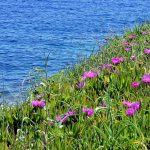August 28,2018 — Croatia’s 2018 summer promised new records for its vital tourism industry. Hands were rubbed raw in anticipation. Much was spent, in terms of currency and energy.
Yet an unprecedented explosion of interest coupled with investment didn’t provide the expected boost during the very peak of the tourist season.
Perhaps a look back can offer some persepctive.
The vaunted heart of Croatia’s peak tourism season began with a roar — specifically in a stadium in Moscow.
It may end with a whimper.
The country had entered the 2018 summer with hope. Last year set new records with seemingly little effort. The trend continued this off-season, as visits during the winter and spring grew. The first six months of 2018 saw a 12 percent jump in arrivals and 9 percent jump in overnight stays.
The good times, it seemed, would continue.
Even the weather promised to cooperate, with a long-term forecast calling for dry, stable weather. The season began in earnest with its expected rituals.
Cicadas began their low-din chorus of chirping. The northerly maestral wind kept its steady schedule. Anxious restauranteurs and bar owners worried a flood of guests would leave them shorthanded.
Meanwhile, the Croatian national team was steamrolling its way to the World Cup finals.
The stage was set for another boom during the pointy summit of the peak tourism season — that month of controlled anarchy between July 15 and August 15, when tourists zig-zag the Adriatic coast like a swarm of rapturous bees.
Yet early figures and anecdotes from ground-level show, at best, stagnation. The sort of leveling off which indicates Croatia’s peak tourism season has, well… peaked.
A glance back at the white-hot chunk of the tourism season offers a confounding view filled with contradictions: record investments yet no mega draws; incredible interest yet no massive influx; a boom in airport traffic and the near-shutdown of the nation’s main carrier.
A Statistical Dud
Croatia’s tourism sector seems to have passed its pubescent growth spurt and stumbled into maturity.
2017 may have been Croatia’s engrossed, intoxicated honeymoon phase with tourism. Of course, a mind-splitting hangover had to follow.
In some respects, very little changed from last year.
Dubrovnik still remained Croatia’s preeminent tourist magnet, still garnering a ton of press all while waging a battle with cruise ship tourism.
Croatia continued its debate over how to best control its crowds.
The philosophical debate began in Hvar last year, after the town installed signs promising hundreds of Euros in fines for roaming the streets in bathing suits or getting carried away on a Saturday night.
Another tactic emerged: promising to post any security camera footage of public urination on YouTube.
The season got off to a shaky start overall. Early figures for July showed a mere one percent increase in overnight stays while arrivals overall fell three percent. About 165.000 fewer tourists visited Croatia during the first half of July than the same period last year.
Croatia’s most loyal guests — Germans, Austrians, Slovenians and Italians — headed elsewhere. (Namely, Turkey and Egypt).
“I am convinced that the hyper-demand we had last year, because of which we had problems, are gone due to Turkey and Egypt,” said President of the Association of Travel Agencies Boris Žgomba at the time.
It seemed the last year’s euphoria caused Croatia’s prices to go a bit haywire, he added.
“People watch prices, compare, and choose,” Žgomba said. “Last year, our hoteliers raised their prices considerably and filled the rooms with no problems. It seems that this year’s prices do not have the same draw.”
The poor statistics were initially blamed on a wide range of boogeymen, from religious holidays to the World Cup tournament in Russia.
The National Tourist Board, in a tacit acknowledgement of the bunk figures, quickly shot past the flaccid peak season to doubled down on promotion of the “off season.”
Croatia’s campsites also experienced a lull, with a 5 percent drop in overnight stays as of early August.
The dud of a season reached its nadir with reports of hotels and apartments dropping their prices in a scramble to not join the 200,000 beds left empty during the peak season.
Some of those empty beds may be among the 6,5 percent added to the market over the last year.
The overall boom in accommodations of every stripe suggested that perhaps too many tried to cash in on the tourist boom too quickly.
The stalled growth forced a bit of much-need soul-searching, according to industry representatives and analysts. It turns out pulling the emergency brake on tourism growth may create the long-needed clarion call to rejigger the Croatian tourism machine, according to some analysts.
“The double-digit growth is definitely a thing of the past, and any growth in today’s circumstances can be considered a good result. What started in early July, indicating a somewhat disappointing tourism season, has apparently continued in August as well, which means that we need to start seriously thinking about structural changes, both in terms of the accommodation portfolio and the strategic direction of our tourism,” said Veljko Ostojić, the director of the Croatian Tourism Association, pointing out that 50% of accommodation facilities are private rentals.
Tourism Minister Gari Cappelli downplayed the figures, saying the era of celebrating raw numbers is over.
“We have to offer quality and increase prices, and not count whether there are two tourists more or fewer,” the minister said, adding that since the start of this year, despite the information which has been published, there have been six to seven percent more guests than last year, while in the past two years the growth was about 20 percent. “The neighboring countries are coming back, but we do not have to worry. Croatia has its market and will always have its quality,” said Cappelli.
The government had its own assessment of the peak tourism season, lauding a five percent increase in arrivals and four percent jump in overnight stays.
Those figures, of course, take the whole year on balance, allowing the off-season increase to paper over the stagnant summer.
Good Press, Bad News
Croatia did, however, experience its usual parade of verified super stars Instagram-ing their way up and down the coast — the sort of free endorsements which carry about as much weight as any tourism board ad campaign.
David Beckham on a family vacation?
Check.
The “British Donald Trump” Lord Sugar cruising up and down the Adriatic coast in his luxury yacht?
Check.
Austrian Chancellor Sebastian Kurz — and later Hungarian Prime Minister Viktor Orban — enjoying a stay in Croatia?
Check.
A trashy British reality show putting Hvar’s best — and worst — assets on display?
U2’s lead singer Bono enjoying yet another sojourn on Hvar?
Oprah Instagramming her visit tostop Dubrovnik?
The best free advertisement, however, came from Russia, as Croatia’s national football team reached the World Cup finals in an epic Cinderella run.
#Croatia began trending on Twitter. The National Tourist Board saw a 250 percent jump in visits to its web pages. Google searches for information about the country skyrocketed.
Total Croatia News itself saw a boom in traffic as a result of Croatia’s showing at the World Cup.
As a result, Croatia never had a better start to peak season marketing by the time the final whistle blew on July 15. The Vatreni lost 4-2 to France, but were still greeted by half a million Croats when they returned to Zagreb.
Total Croatia News itself saw a boom in traffic as a result of Croatia’s showing at the World Cup.
The World Cup win did reportedly convince some tourists already in the country to stay longer. Those expected football-hungry masses hankering to see the homeland of Modrić, Subašić and Rebić ultimately never showed up in the statistics this summer.
In the fickle world of measuring the comings-and-goings of vacationers, Croatia may never have a fully accurate measure of just how much good the Vatreni did.
The press did its usual job of fawning over the Adriatic coast: EasyJet named Croatia its “Destination of the Year”; the Italian press lavished praise onto Croatia ahead of the Ferragosto vacation season.
Even Croatia’s president Kolinda Grabar-Kitarovic inadvertently drew attention by being mistaken for rapper Ice T’s wife Coco.
Yet a depressing knack for ruining a visitor’s stay emerged, and consumed much of the local media’s bandwidth.
One the more bizarre episodes came from Zadar, where a homophobic apartment owner rejected a Brazilian couple with the excruciatingly direct message: “We don’t take gays.”
Booking.com quickly removed Tomislav Gospić’s apartment, yet the owner became a cause celebre among Croatia’s anti-gay sect of conservative Christians.
Shortly after, news emerged of a British student being allegedly beaten with a metal rod at a Split hostel in July, leading to the business’s eventual shuttering.
Then there’s the ongoing saga of the British tourist who fell off a cruise ship — or took a drunken leap, depending on your source — in the dead of night then bobbed in the Adriatic Sea while singing tunes until a Croatian patrol boat.
Several cars took a dip into the Adriatic as well
The lackluster growth in actual guests was matched by a second, more-dire surprise: the much-feared labor shortage came to fruition.
Cafe and restaurant owners complained to the press about being shorthanded. Tourism Minister Capelli admitted as much, saying Croatia must find 15,000 more tourism workers next year.
The Efforts Continue
Modrić’s heroics aside, the lackluster growth this summer can’t be blamed on laziness. Overall investment in the industry reached one billion Euros, eclipsing last year’s figure of nearly 8o0 million.
New accommodations up and down the coast finally opened their doors. Plava Laguna, for example, opened one of its largest investments in recent memory with the 35 million Euro Park Resort opened on July 19. A new four-star hotel also opened in Hvar.
A knack for novelty and distinct tourist offerings also emerged, with accommodations such as the floating apartment at Punat Marina on Krk.
Another promising sector is “Eco Tourism,” a form of sustainable tourism which luxuriates in simplicity. New projects such as the T-Nest resort in Lovinac, which will open next June, may offer a new blueprint for the tourism industry.
Next year may also offer a jump in yankee visitors, as American Airlines announced direct flights from the United States to Dubrovnik. (The U.S. is often seen as an untapped Holy Grail market for the Croatian tourism industry.)
Yet where does all this leave Croatia, as 2018’s summer season enter’s its coda?
Nearly everyone profiting from or working in the tourism industry suggests something major has to change. The major government bodies, however, continue to suggest the only answer is more. More tourism in the off-season. More quality offerings. More effort. More work.
None, it seems, are acquainted with the law of diminishing returns.









